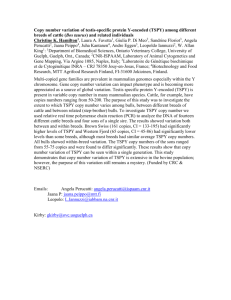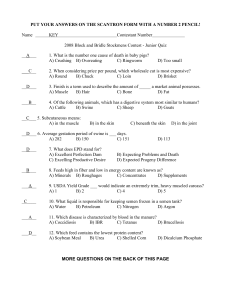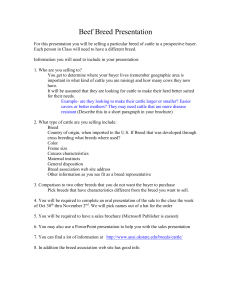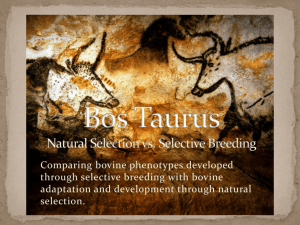Cattle Color - University of Tennessee Extension
advertisement
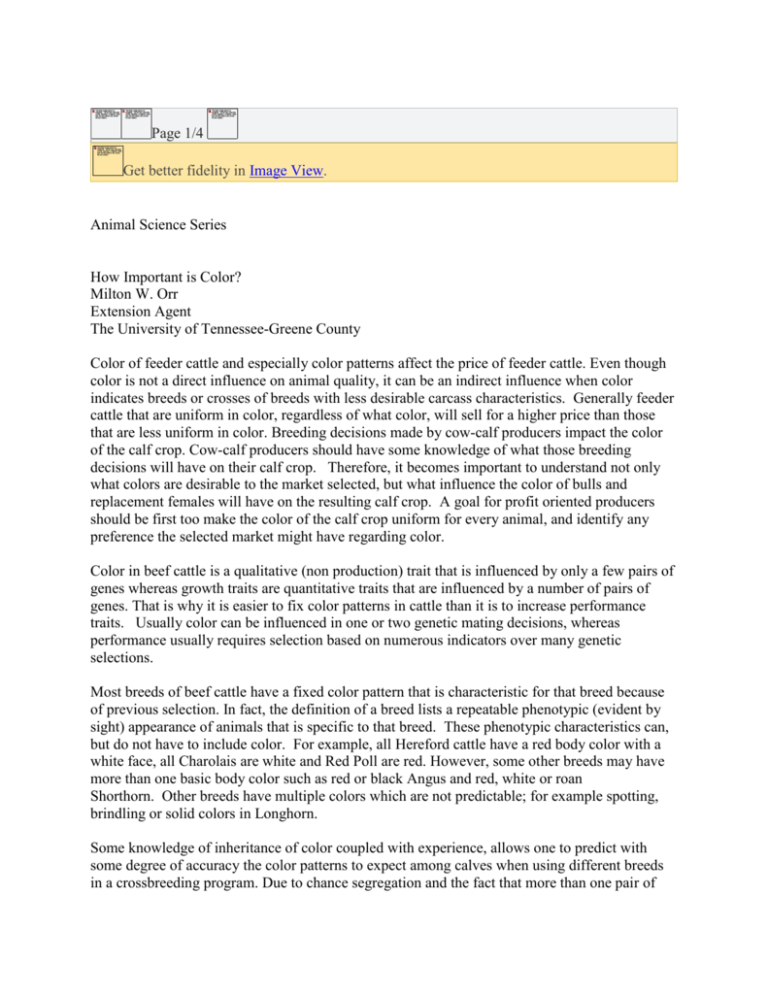
Page 1/4 Get better fidelity in Image View. Animal Science Series How Important is Color? Milton W. Orr Extension Agent The University of Tennessee-Greene County Color of feeder cattle and especially color patterns affect the price of feeder cattle. Even though color is not a direct influence on animal quality, it can be an indirect influence when color indicates breeds or crosses of breeds with less desirable carcass characteristics. Generally feeder cattle that are uniform in color, regardless of what color, will sell for a higher price than those that are less uniform in color. Breeding decisions made by cow-calf producers impact the color of the calf crop. Cow-calf producers should have some knowledge of what those breeding decisions will have on their calf crop. Therefore, it becomes important to understand not only what colors are desirable to the market selected, but what influence the color of bulls and replacement females will have on the resulting calf crop. A goal for profit oriented producers should be first too make the color of the calf crop uniform for every animal, and identify any preference the selected market might have regarding color. Color in beef cattle is a qualitative (non production) trait that is influenced by only a few pairs of genes whereas growth traits are quantitative traits that are influenced by a number of pairs of genes. That is why it is easier to fix color patterns in cattle than it is to increase performance traits. Usually color can be influenced in one or two genetic mating decisions, whereas performance usually requires selection based on numerous indicators over many genetic selections. Most breeds of beef cattle have a fixed color pattern that is characteristic for that breed because of previous selection. In fact, the definition of a breed lists a repeatable phenotypic (evident by sight) appearance of animals that is specific to that breed. These phenotypic characteristics can, but do not have to include color. For example, all Hereford cattle have a red body color with a white face, all Charolais are white and Red Poll are red. However, some other breeds may have more than one basic body color such as red or black Angus and red, white or roan Shorthorn. Other breeds have multiple colors which are not predictable; for example spotting, brindling or solid colors in Longhorn. Some knowledge of inheritance of color coupled with experience, allows one to predict with some degree of accuracy the color patterns to expect among calves when using different breeds in a crossbreeding program. Due to chance segregation and the fact that more than one pair of genes affect many color patterns there will be some exceptions. These exceptions may be evidenced by dilution of one or more colors of the parents due to a dilution gene. There are however, colors that are dominant over others that will allow producers to make selections to standardize colors of the calf crop in one breeding season. Greene County 204 North Cutler Street, Suite 105 Greeneville, TN 37745-3847 Phone (423) 798-1710 Fax (423) 798-1713 Next Page Find Go to Page Thumbnail Index Image View Download a Copy Close




